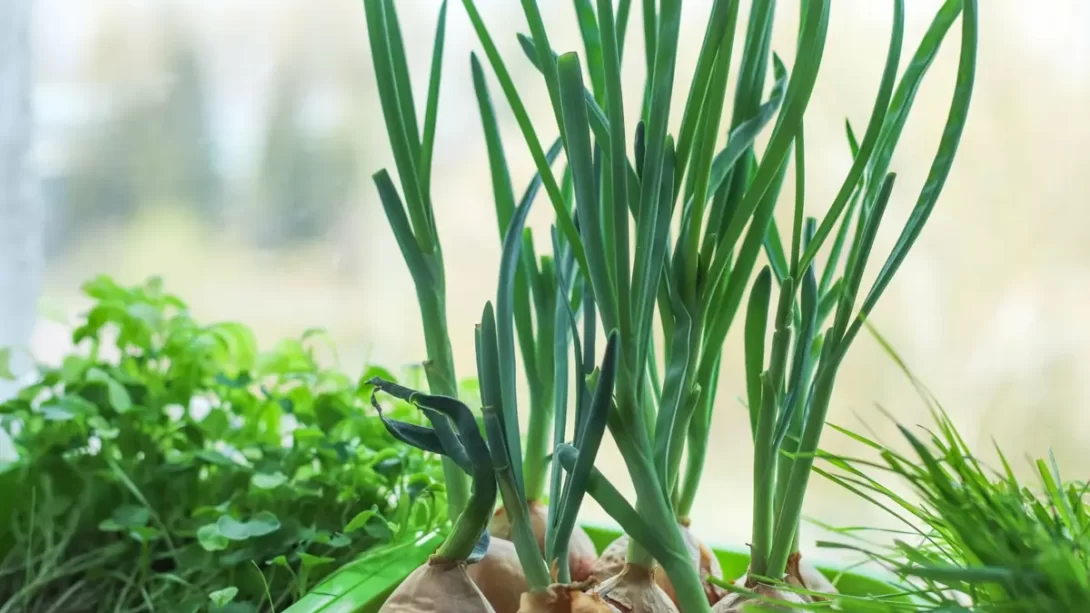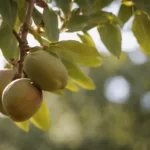Scallions, also known as green onions, are a versatile and flavorful addition to many dishes. Their mild taste and ease of growing make them a favorite among home cooks and gardeners alike. Growing scallions indoors offers a wealth of benefits, including the convenience of having fresh herbs at your fingertips and the ability to grow them year-round, regardless of outdoor weather conditions. This guide will walk you through the process of cultivating scallions inside your home, ensuring a continuous supply of fresh greens for your culinary needs.
Selecting Scallion Varieties
There are several varieties of scallions, each with unique characteristics and flavors. Popular choices for indoor cultivation include ‘Evergreen Hardy White’ and ‘Tokyo Long White’, known for their robust flavor and good growth in containers. When choosing a variety, consider the size of your growing space and your flavor preferences. Some varieties have a more pronounced onion flavor, while others are milder and more suited to raw consumption. Visit your local garden center or explore online seed catalogs to find the best variety for your indoor garden.
Starting from Seeds or Bulbs
Scallions can be grown from seeds or regrown from the bulbs of store-bought scallions. To start from seeds, choose a high-quality seed variety and plant them in your container, lightly covering them with soil. Seeds typically germinate within 7-14 days. For quicker results, you can regrow scallions from the bulbs. Simply save the bottom inch of the bulb from store-bought scallions, leaving the roots intact, and plant them in soil or place them in a glass of water. This method is not only efficient but also a great way to reduce kitchen waste.
Choosing the Right Container and Location
Selecting the right container is crucial for the successful indoor cultivation of scallions. A pot or container with good drainage is essential to prevent waterlogging, which can lead to root rot. The container should be at least 6 inches deep to accommodate the roots. As for location, scallions thrive in bright, indirect light. A south-facing windowsill is an ideal spot, providing sufficient sunlight for healthy growth. If natural light is limited, consider using grow lights to supplement the light requirements of your scallions.
Soil and Planting
The right soil mix is vital for growing healthy scallions. A lightweight, well-draining potting mix is ideal. You can enhance regular potting soil with perlite or vermiculite to improve drainage. When planting seeds, sow them about a quarter inch deep and cover lightly with soil. Space the seeds or bulbs about an inch apart to give each plant enough room to grow. After planting, water the soil gently but thoroughly to settle it around the seeds or bulbs.
Light and Temperature Requirements
Scallions need plenty of light to grow well. Aim for at least six hours of sunlight per day. If you’re using a windowsill, rotate the pot regularly to ensure even growth, as plants tend to lean towards the light source. In case of insufficient natural light, especially during winter months, supplement with a grow light. As for temperature, scallions prefer a cooler environment, with ideal temperatures ranging from 65 to 75 degrees Fahrenheit. Avoid placing them near heat sources or in drafty areas.
Watering and Humidity
Watering correctly is crucial for indoor scallions. The goal is to keep the soil consistently moist but not waterlogged. Overwatering can lead to root rot, while under-watering can stress the plants. Check the soil moisture by sticking your finger an inch into the soil. If it feels dry at that depth, it’s time to water. Scallions grown indoors may also benefit from increased humidity. If your home is particularly dry, consider placing a tray of water near the plants or using a humidifier.
Fertilizing Indoor Scallions
Scallions do not require heavy feeding, but a balanced, all-purpose fertilizer can be applied every 4-6 weeks to support growth. Opt for a liquid fertilizer diluted to half strength, which can be added to the water during watering. Be careful not to over-fertilize, as this can lead to excessive leaf growth at the expense of the roots. Organic options like fish emulsion or seaweed extract are also excellent choices for providing nutrients to your scallions.
Harvesting and Continuous Growth
Harvesting scallions correctly can encourage continuous growth, providing a steady supply of fresh greens. You can start harvesting when the plants are about 6 inches tall and the stalks are a few millimeters thick. Snip the green tops with scissors, leaving at least an inch or two of the plant above the soil to regrow. For a more substantial harvest, you can pull out the entire plant, bulb and all, if you have plenty growing. Remember, the more frequently you harvest, the more your scallions will produce.
Troubleshooting Common Problems
Growing scallions indoors is generally straightforward, but you might encounter a few common issues. If your scallions are not growing vigorously, they might not be receiving enough light. Yellowing leaves can indicate overwatering or poor drainage. Keep an eye out for pests like aphids, which can be managed with insecticidal soap or neem oil. Ensure good air circulation and avoid overcrowding to prevent fungal diseases. Regularly inspecting your plants and promptly addressing any issues will keep your indoor scallion garden healthy and productive.
Conclusion
Growing scallions indoors is a simple and satisfying way to add fresh flavor to your cooking throughout the year. With minimal space and effort, you can enjoy a constant supply of this versatile herb. By following these steps for selection, planting, care, and harvesting, you’ll be well on your way to having a thriving indoor scallion garden. This endeavor is not just rewarding in terms of culinary benefits but also offers a great introduction to indoor vegetable gardening, encouraging you to try growing more herbs and vegetables inside your home.



